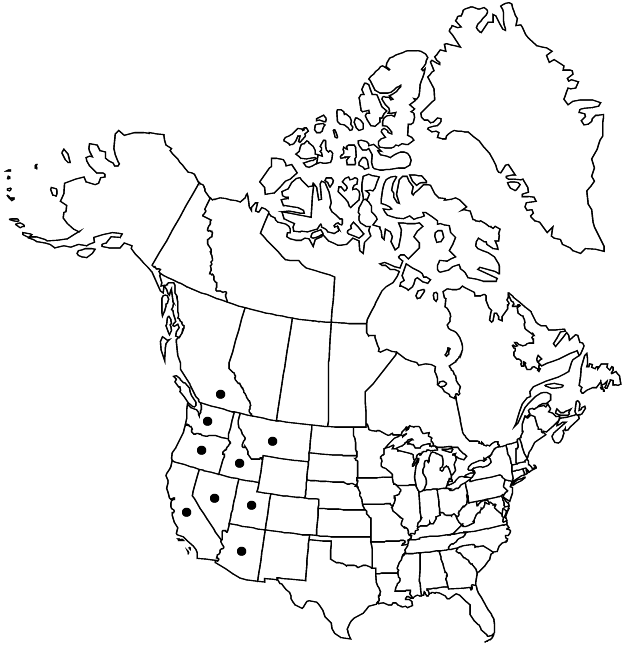Difference between revisions of "Stellaria nitens"
in J. Torrey and A. Gray, Fl. N. Amer. 1: 185. 1838.
FNA>Volume Importer |
FNA>Volume Importer |
(No difference)
| |
Revision as of 22:33, 16 December 2019
Plants annual, from threadlike taproots. Stems erect, sparingly branched below inflorescence, 4-sided, 3–25 cm, glabrous or sparsely hairy. Leaves sessile, crowded at base, shiny; blade oblanceolate to obovate and spatulate (proximal) or linear-lanceolate (distal), 0.5–1.5 cm × 0.5–2 mm, base round, apex acuminate, glabrous, often ciliate on margins. Inflorescences terminal, 3–21-flowered (rarely more) cymes; bracts linear-lanceolate, 1–12 mm, scarious distally, herbaceous proximally, often ciliate on margins. Pedicels ascending to erect, ± straight in fruit, 2–25 mm, glabrous. Flowers 2–3 mm diam.; sepals 5, with 3 prominent, ridged veins, very narrowly lanceolate, to acicular, 2.8–4.2 mm, margins wide, scarious, apex acuminate, glabrous; petals 5 or absent, 1–3 mm, shorter than sepals, blade apex 2-lobed; stamens 3–5; styles 3, spreading, becoming curled, ca. 0.3 mm. Capsules green or straw colored, narrowly ovoid, 2–3 mm, shorter than sepals, apex obtuse, opening by 3 valves, splitting into 6; carpophore absent. Seeds brown, round, 0.5–0.7 mm diam., minutely tuberculate. 2n = 20, 40.
Phenology: Flowering spring.
Habitat: Dry, open habitats: sand dunes, stream banks, rocky outcrops, open woodlands, beneath boulders, disturbed areas
Elevation: 0-2000 m
Distribution

B.C., Ariz., Calif., Idaho, Mont., Nev., Oreg., Utah, Wash.
Discussion
Selected References
None.